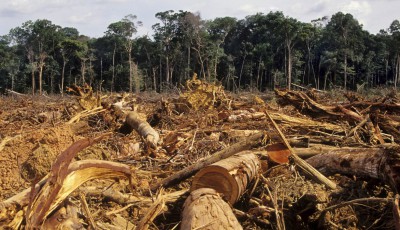Our changing forests – fires, storms, and insects are changing everything
If you go down in the woods today in in for a big surprise! Fires, storms, insects and
climate change are increasing the risks for forests worldwide
About a third of worldwide land surface is covered by forests, but knowledge about how disruptive factors that affect them interact with one another in the context of global climate change is still lacking, as these are often analyzed separately and on a local scale.
Now for the first time, an international team of scientists has comprehensively examined possible climate impacts on disturbances in forests.
The team did this on a basis of more than 600 research papers of the last 30 years. Published in the scientific journal Nature Climate Change, their results show that increasing risks for forests have to be expected in the future.
“When climate is changing, there are initially direct effects on the growth of the trees. But the chain of climate impacts is considerably longer: if, for instance, more rain saturates the soils or if soils are less frequently frozen, the trees will have less stability to withstand storms and damage will increase,” said lead author Rupert Seidl from the University of Natural Resources and Life Sciences in Vienna.
“The many dead and dying trees will then provide ideal breeding material for insects such as bark beetles to reproduce quickly. At the same time, the trees that are still alive will be weakened and will thus be more vulnerable to insect attacks,” he added.
“Our study shows that climate change significantly influences disruptive factors all around the world – and that a further increase of disturbances in forests has to be expected in the future.”
Stress is normal for the forests – while the increase of disturbances is not
“Whether in the giant boreal forests of Scandinavia and Russia or in the wide woodlands of North America – fundamentally, natural disturbances like fires, insect attacks or storms are normal aspects of these ecosystems,” says project leader Christopher Reyer of the Potsdam Institute for Climate Impact Research.
To get shaken up a little through natural disturbances can even be good for forests, as the natural renewal for instance promotes a greater biological diversity.
However, it is already clear that risks caused by fires, pests and fungi will increase in the context of climate change – the devastating forest fires in Canada and Russia in the last years are an example of possible impacts.
Fires are currently the most significant disruptive factor in many forests around the world, and will become an even more serious threat in the coming decades, according to the scientists.
The forests of Northern and Central Europe, however, have until present primarily been impaired by storms such as Cyclone Kyrill in 2007, and the insect damage that follows them – a type of damage which will also increase under climate change.
Damage caused by ice and snow were the only disruptive factors examined by the study that will likely decrease under continuing climate change. However, this positive effect cannot compensate the negative effects from other factors.
“Our analysis clearly shows that climate change brings enormous challenges for forests – the forest sector has to adapt and to increase its resilience, as it seems impossible to prevent damage completely”, says Seidl.
“In the long term, reductions of greenhouse-gas emissions and effective climate protection measures will help the most,” adds Reyer.
The full article, “Forest disturbances under climate change”, is available in Nature Climate Change [10.1038/NCLIMATE3303] . Weblink to the article: https://www.nature.com/









